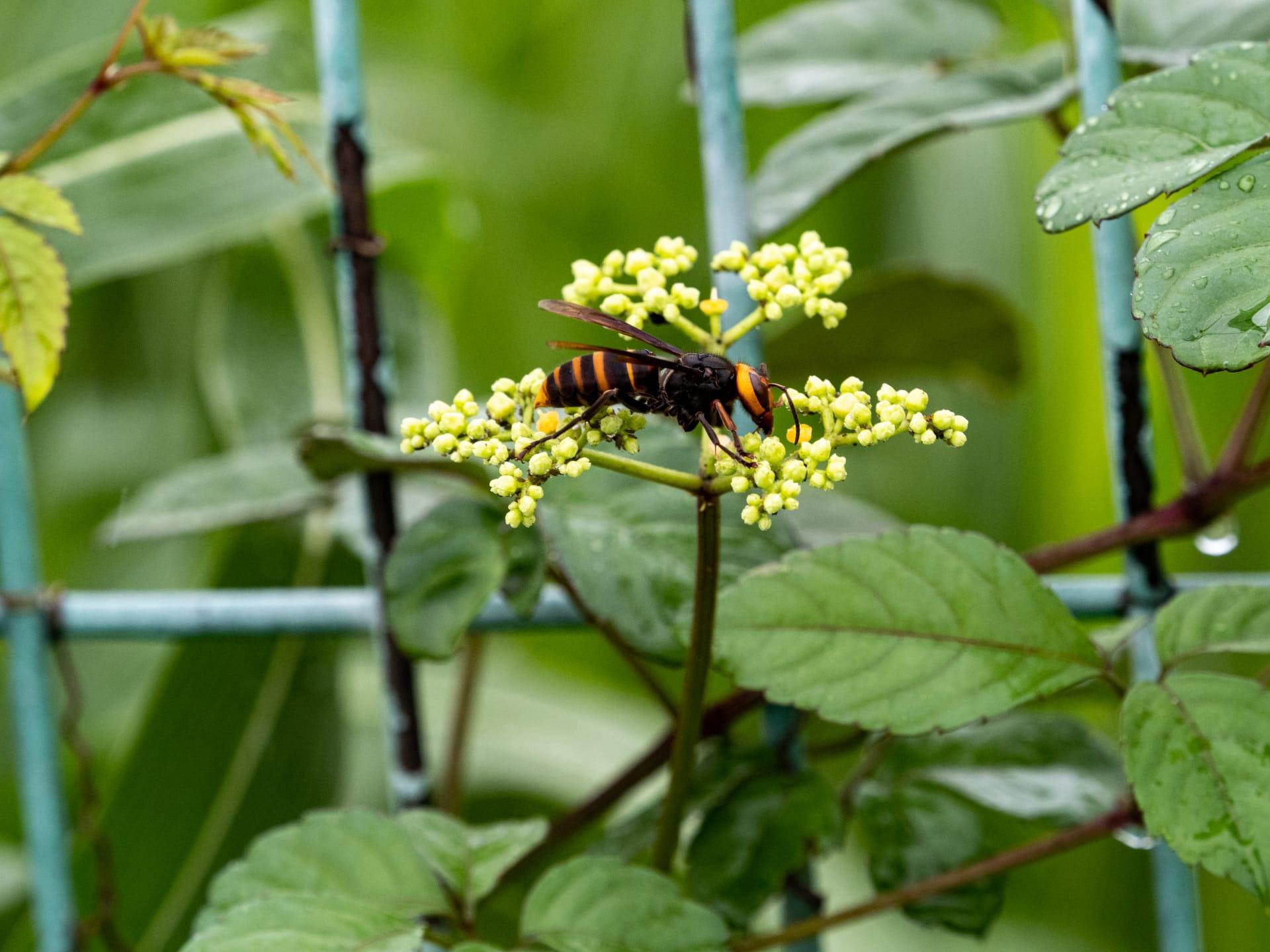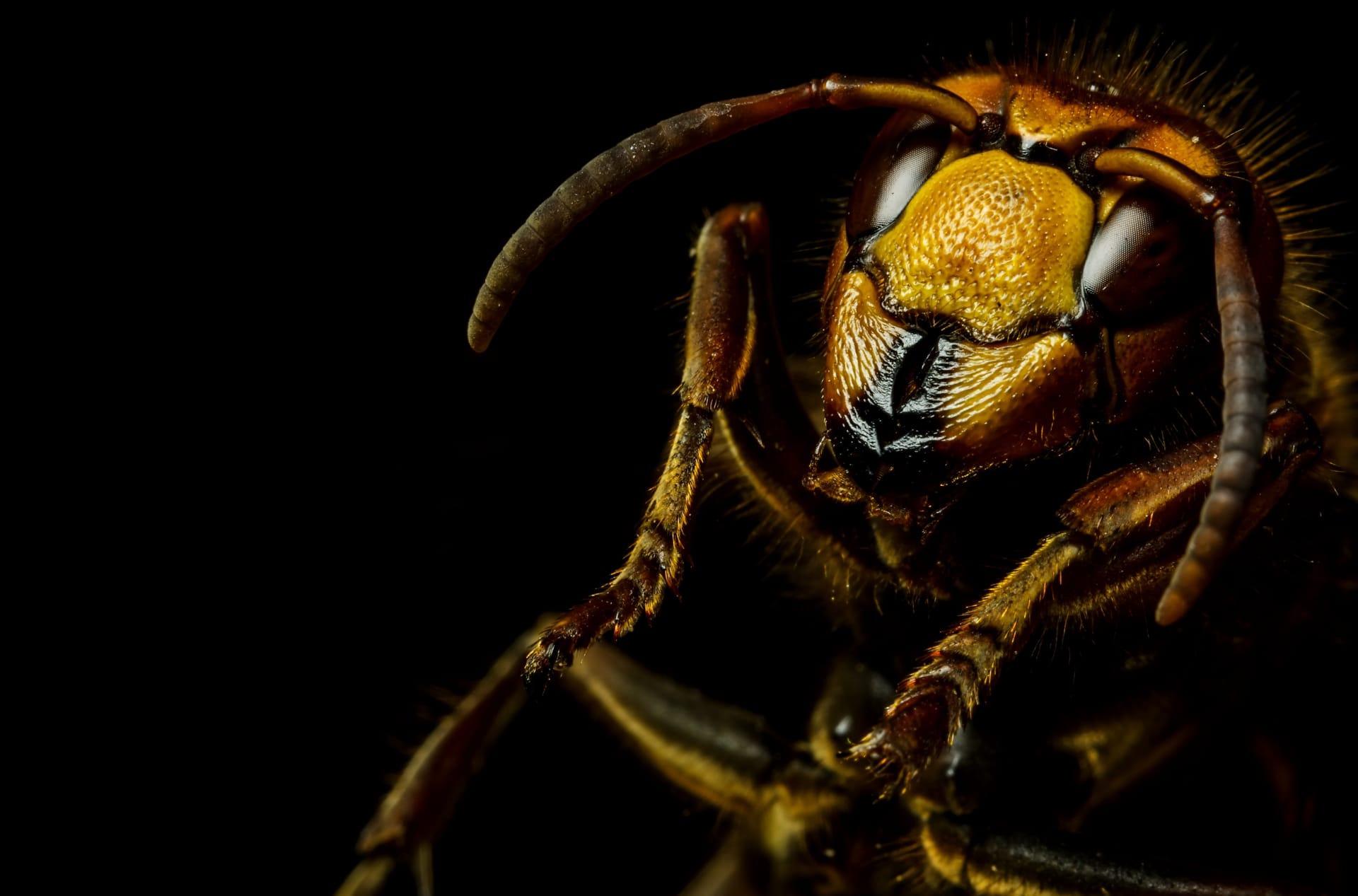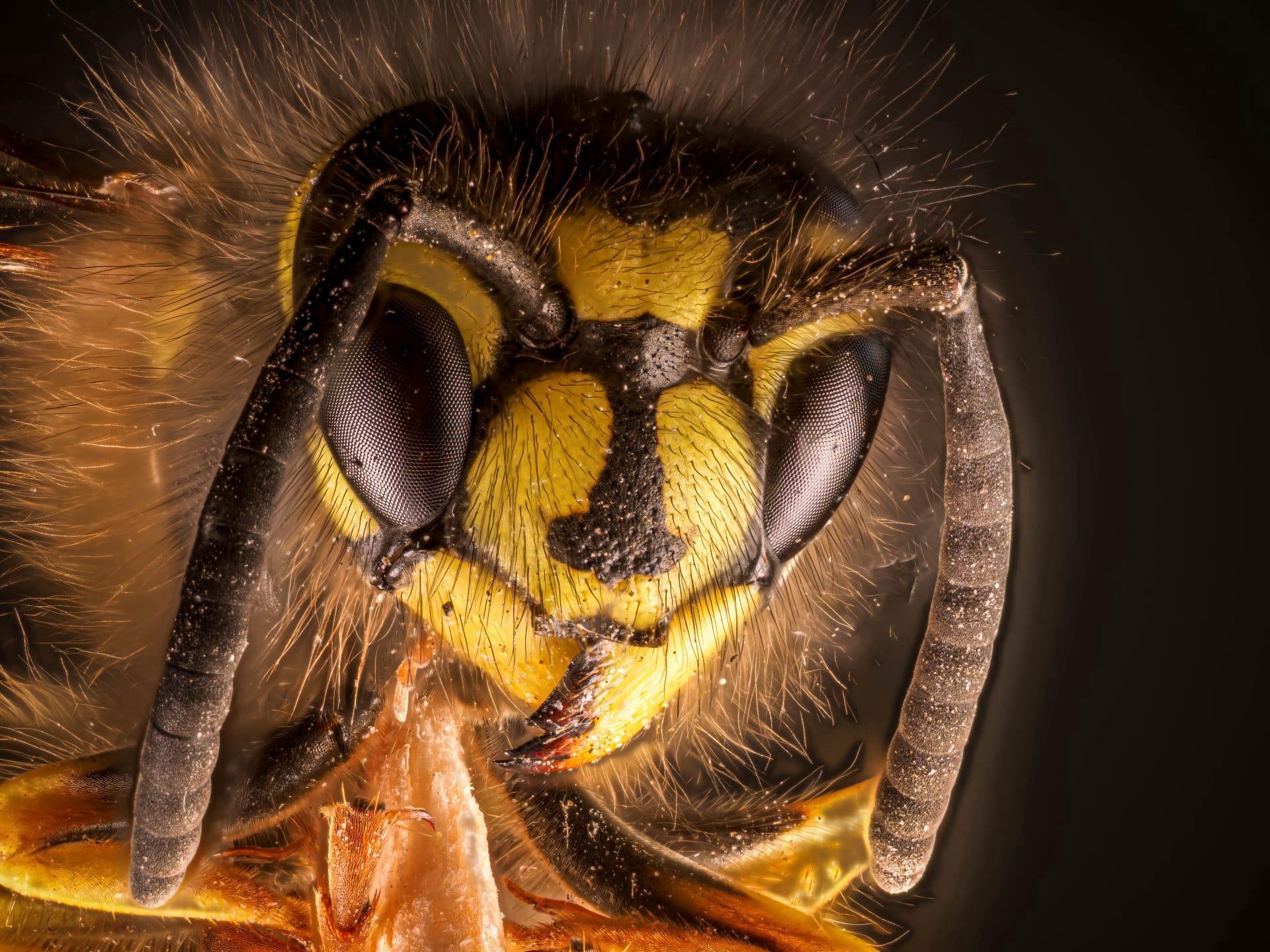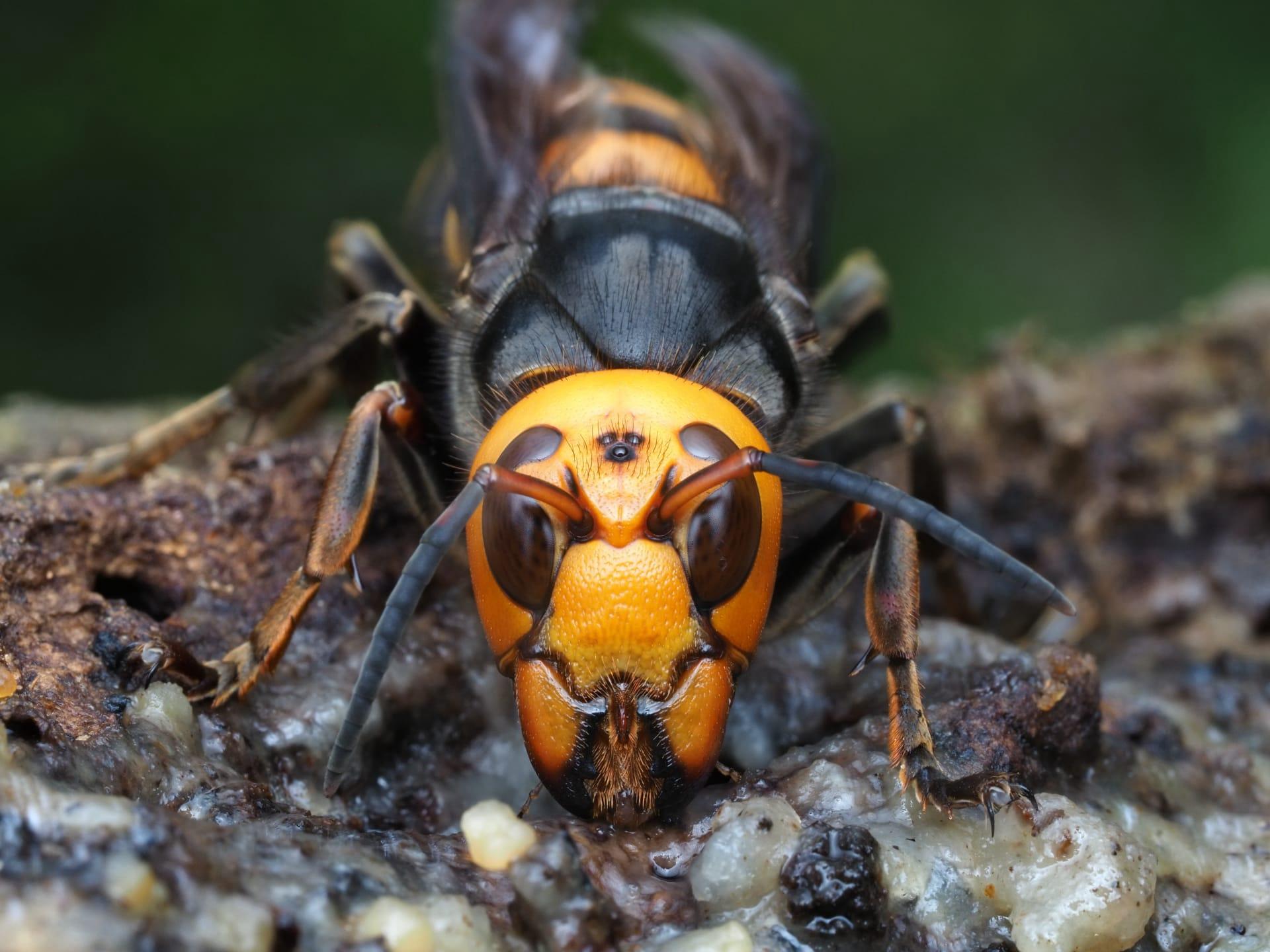1
Asian giant hornets, commonly known as "murder hornets," have a fearsome reputation. Their venom is potent, and they can sting multiple times. The venom contains a neurotoxin called mandaratoxin, which can be lethal to humans in large quantities. Surprisingly, a single sting is not fatal to a healthy individual, but multiple stings can lead to serious medical conditions. Each hornet can deliver nearly 0.2 mg of venom per sting.
These hornets are formidable predators of other insects, particularly honeybees. In a very short time, a small group of murder hornets can decimate an entire honeybee hive. They do this by "beheading" the bees and feeding the thoraxes to their young. This behavior can have devastating impacts on bee populations, which are vital for pollination in many ecosystems.

2
Murder hornets are impressively large, with queens growing up to 2 inches in length, making them the world's largest hornet species. Their size is not just for show; it also contributes to their hunting prowess. They have large mandibles, which are effective for capturing, killing, and carrying large insects, especially bees.
Their lifecycle is fascinating. Murder hornets create underground nests, typically in rotten wood or in the soil. Queens emerge in the spring to establish new colonies. Initially, they rear the first batch of workers alone. These workers then take over foraging and caring for the young as the colony grows. By late summer, a colony can reach up to several hundred individuals.

3
These hornets have a unique method of hunting: they spray a pheromone marker on a beehive, which attracts other hornets to the location. This coordinated attack strategy is highly effective and allows a small group of hornets to overcome a much larger bee colony. They particularly target the late summer when bee colonies are at their peak strength.
Interestingly, murder hornets have a relatively peaceful relationship with humans unless provoked. They generally avoid human interaction and are less aggressive towards people compared to other hornet species. However, their presence becomes a concern due to their impact on honeybee populations and potential danger if they feel threatened.

4
Murder hornets are not just hunters; they also play a role in scavenging. They are known to feed on the remains of dead animals and insects, contributing to the ecosystem's cleanup process. This scavenging behavior is particularly useful in their native habitats, where they help maintain environmental balance.
Their wingspan is another notable feature, reaching up to 3 inches, which is large compared to their body size. This allows them to fly considerable distances, up to several miles, in search of food. Their flight is also quite fast, enabling them to catch their prey with ease or escape from potential threats quickly.

5
Murder hornets have a unique defense mechanism against honeybee attacks. When honeybees try to swarm and overheat the hornet as a defense, the murder hornet can survive at higher temperatures than the bees. They can withstand up to 115°F, while honeybees can only survive up to 113°F. This slight difference allows murder hornets to survive bee attacks that would be lethal to other predators.
While known for their aggression towards bees, murder hornets are surprisingly gentle within their own colonies. They exhibit complex social behaviors, including caring for their young and the queen, sharing food, and communicating about food sources. This social structure is vital for the survival of their species and the maintenance of their colonies throughout the year.